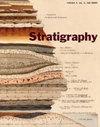冰窖气候间隔对热带植被和植物演化的影响
IF 0.9
3区 地球科学
Q3 GEOLOGY
引用次数: 9
摘要
复杂的植物生态系统在晚古生代冰河时期首次经历了大冰川的影响。石炭纪热带植被对这些气候波动的一般反应,特别是从温室到冰窖条件的转变(冰河时代感知)和回归温暖时期,现在可以根据最初为解决地层学和古生态学问题而收集的大量古植物学数据集来表征。这些数据主要来自北美和中欧,当时它们是位于热带的单一大陆块的一部分。在冰窖条件开始时,创新(导致新形式和新生态的物种形成)发生在受过湿(常湿)气候影响的环境中,而在排水较好、较干燥和季节性较强的环境中,植物群仍然由旧生物群落的残留物/幸存者所主导。这种模式被称为“Havlena效应”。在冰期的高峰时期,冰期-间冰期循环产生了海平面的大幅度波动和随之而来的气候变化,使得热带大陆的大片地区交替地被浅海或植被茂密的陆地沿海平原所覆盖。尽管在每次海侵过程中潮湿低地生境被反复破坏,并伴随着气候从湿润到半湿润、季节性干燥的变化而进一步破碎化,但湿地生物群系中大部分物种和植物群落的基本结构保持稳定。这种恢复力表明,冰期-间冰期旋回本身并不是这些生物群落的灭绝或灭绝的原因。在从冰窖到温室的过渡过程中,干燥的生物群系形式在物种保护窗口之外进化,在盆地景观中占主导地位,而湿润景观则保留了其“保守”的物种组成。这种模式被称为“以利亚效应”。因此,环境阈值跨越标志着这一寒冷期的开始和结束,并具有不同环境设置下的响应位点。相比之下,在冰期-间冰期期间发生的较小的系统变化对热带低地植被的组成或结构没有实质性的影响。本文章由计算机程序翻译,如有差异,请以英文原文为准。
Impact of an icehouse climate interval on tropical vegetation and plant evolution
Complex plant ecosystems first experienced the effects of major glaciation during the Late Paleozoic Ice Age. The general response of Carboniferous tropical vegetation to these climatic fluctuations, especially the transitions from greenhouse to icehouse conditions (ice age sensu lato) and a return to warm times, now can be characterized based on large paleobotanical data sets originally collected to solve stratigraphic and paleoecologic questions. These data come primarily from North America and central Europe, which at the time were part of a single continental mass situated in the tropics. At the onset of icehouse conditions, innovation (speciation leading to novel forms and ecologies) occurred in environments subjected to perhumid (everwet) climates, while floras in better drained, drier, and more seasonal conditions remained dominated by holdovers/survivors from older biomes. This pattern is termed the ‘Havlena effect’. During the height of the ice age, glacial-interglacial cycles produced large sea-level fluctuations and concomitant climatic changes, such that significant areas of continents in the tropics were alternately covered by shallow seas or densely vegetated terrestrial coastal plains. In spite of the repeated destruction of wet lowland habitats during each marine transgression and their further fragmentation that accompanied a climate change from humid to sub-humid, seasonally dry conditions, most of the species and the basic configuration of the plant communities in the wetland biome remained stable. This resilience demonstrates that glacial-interglacial cycles by themselves are not responsible for either extirpation or extinction of these biomes. At the transition from icehouse-to-greenhouse conditions, dry-biome forms, which had been evolving outside of the taphonomic preservational window, became dominant across basinal landscapes while wet landscapes retained their ‘conservative’species composition. This pattern is termed the ‘Elias effect’. Thus, environmental threshold-crossing marked both the beginning and end of this cold interval, with the loci of response in different environmental settings. In contrast, the minor systematic changes that occurred during glacial-interglacial cycles did not influence the composition or structure of tropical lowland vegetation substantially.
求助全文
通过发布文献求助,成功后即可免费获取论文全文。
去求助
来源期刊

Stratigraphy
地学-地质学
CiteScore
1.80
自引率
6.70%
发文量
0
审稿时长
>12 weeks
期刊介绍:
The journal’s mission is to publish peer-reviewed papers that use modern stratigraphic tools – biostratigraphy, chemostratigraphy, magnetostratigraphy, cyclostratigraphy, sequence stratigraphy, climatostratigraphy, lithostratigraphy, GSSPs and more – to explore broad ideas in earth history.
 求助内容:
求助内容: 应助结果提醒方式:
应助结果提醒方式:


